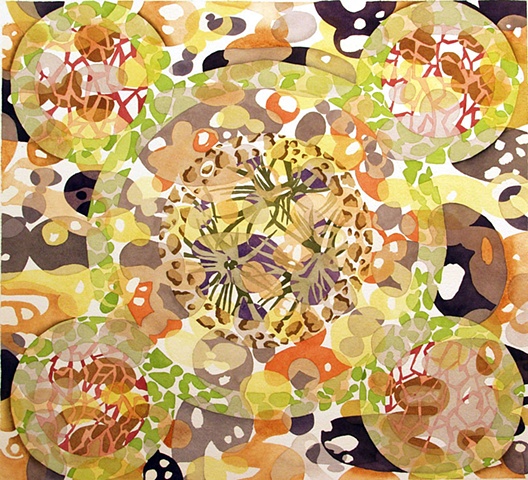Camouflage Series
Camouflage, an abstraction of nature and a powerful symbol, has a rich
history that has involved artists since its inception. Though first developed and used
for practical purposes by the military, camouflage was eventually appropriated by
fashion designers, commercial designers, and artists for symbolic and aesthetic ends.
Since its first commercial use after WWI, camouflage has undergone several
transformations and shifts in meaning. It began to be used in the fashion world, and
it can now be found on many commercially produced products outside of the
military and hunting spheres.
My long-term interest in natural form and abstraction led me to use camouflage
in the DPM (Disruptive Pattern Material) and Dazzle Painting Series. The title
of the latter series references the “dazzle paintings” on ships in WWI and WWII that
were painted with bold abstractions to obscure the outlines of the vessels and
confuse the enemy.
The organizational structure for these paintings is based upon sacred
geometry, specifically variations of the quincunx or double cross form, which
originated in early depictions of the cosmos. The Italian Cosmati school of marble
workers, known for their geometrical mosaic work in the thirteenth century, used
this form extensively to embellish pavements in Christian churches of the thirteenth
century, and the form also has deep architectural roots in the centralized plans of
Byzantine churches. Melding military camouflage patterns with sacred geometry
offers unlimited possibilities for combining rich and contrasting visual forms. With
military power and religious ideology currently at the crux of many global conflicts,
this combination is especially timely. The contrast of the sacred with the profane is
apparent but not paramount. Although this series incorporates military and religious
cultural symbols, it is not a commentary on either, but an exercise in blending
opposites to make something new. Each painting challenges me to contrast and
layer the camouflage patterns within the framework and variations of the quincunx.
The fluid, transparent watercolor medium has been chosen to soften the slick
camouflage graphics and strict geometry, while the subtle layering of veiled color
connects and dissolves shapes. The world of these paintings is in flux in lateral shifts.
The paintings resemble mandalas both in form and complexity with the result being
a transformation of two disparate symbolic forms.
